Kia ora and welcome to the June 2021 update from the Transmission Gully team.
If you’re interested in what we’ve been doing, we have a fly over Transmission Gully with the help of our latest drone footage. A lot of progress has been made in the last two months.
In the north, from Mackays Crossing to the SH58 Interchange, we’ve completed all the subgrade pavement layers. The basecourse and prime coat seal is complete from just south of Pouāwha / Wainui Saddle to the bridge over the SH58 Interchange and 59% of the deep lift asphalt is laid. We’ve started connecting power for our radar system (which will tell the motorway operator if there has been an incident) and as you’ll see on the video, 44% of the safety barriers are already installed.
As you fly south (from SH58 to Linden) – all the cement stabilisation of the pavement layers is complete. All of the basecourse layers are primed and we’re in the process of chip sealing.
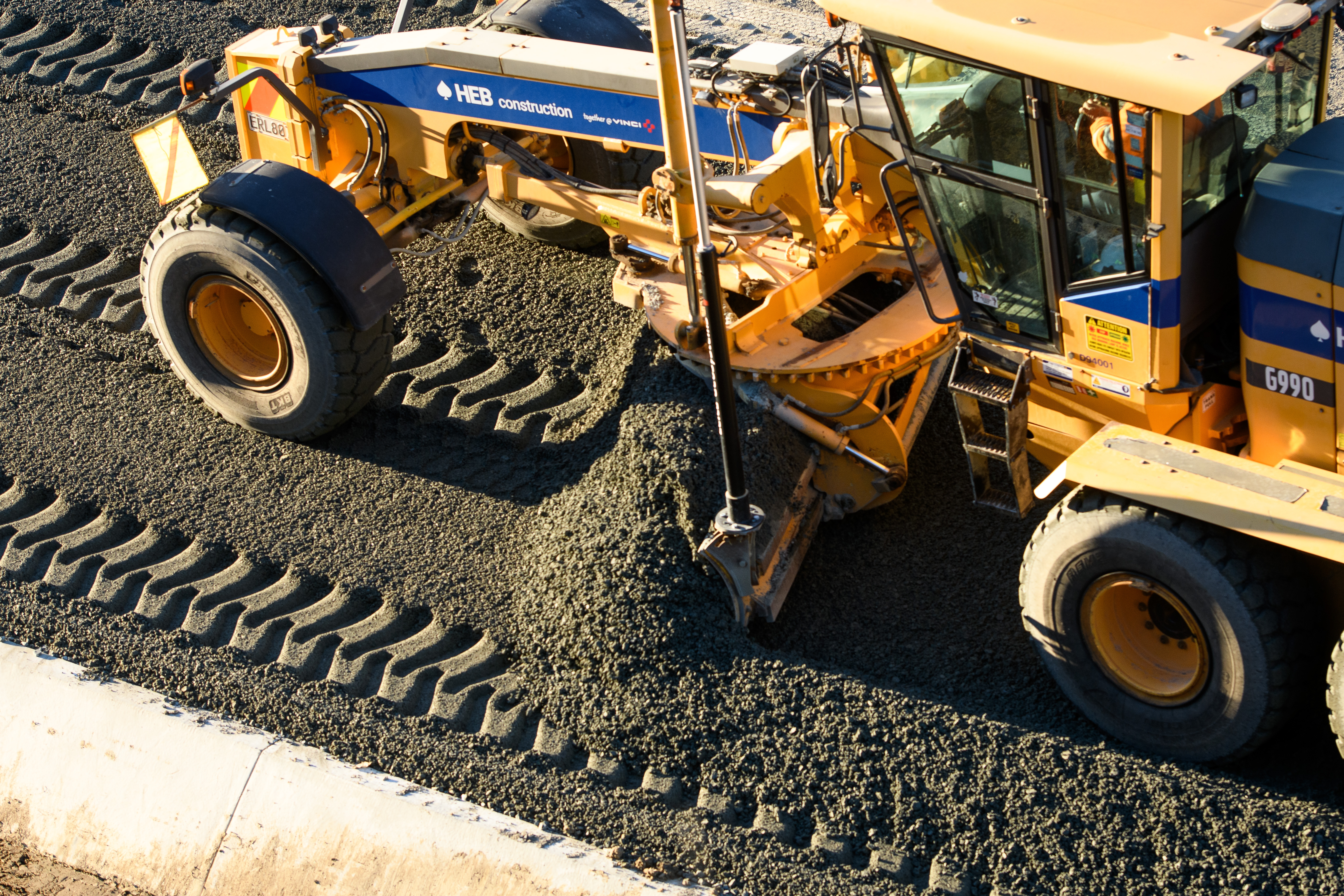
A grader shapes the aggregate to the desired grade and level.
There are two types of paving on Transmission Gully – granular pavement (chipseal) and structural (deep lift) asphalt.
In our April newsletter we took a deep dive into deep lift. Deep lift asphalt is being used on the steeper parts of the road, such as Pouāwhā/Wainui Saddle, and on the busiest parts of the motorway, such as the interchanges.
The remaining two thirds of the road will be chipseal.
Chipseal is the most common type of road surface in New Zealand. Which is not surprising as it delivers great frictional characteristics (such as skid resistance) and has lower maintenance. Chipseal is suitable for the areas along the motorway in which it will be used.

A stabiliser (following a water cart) moves over the surface mixing cement with the aggregate.
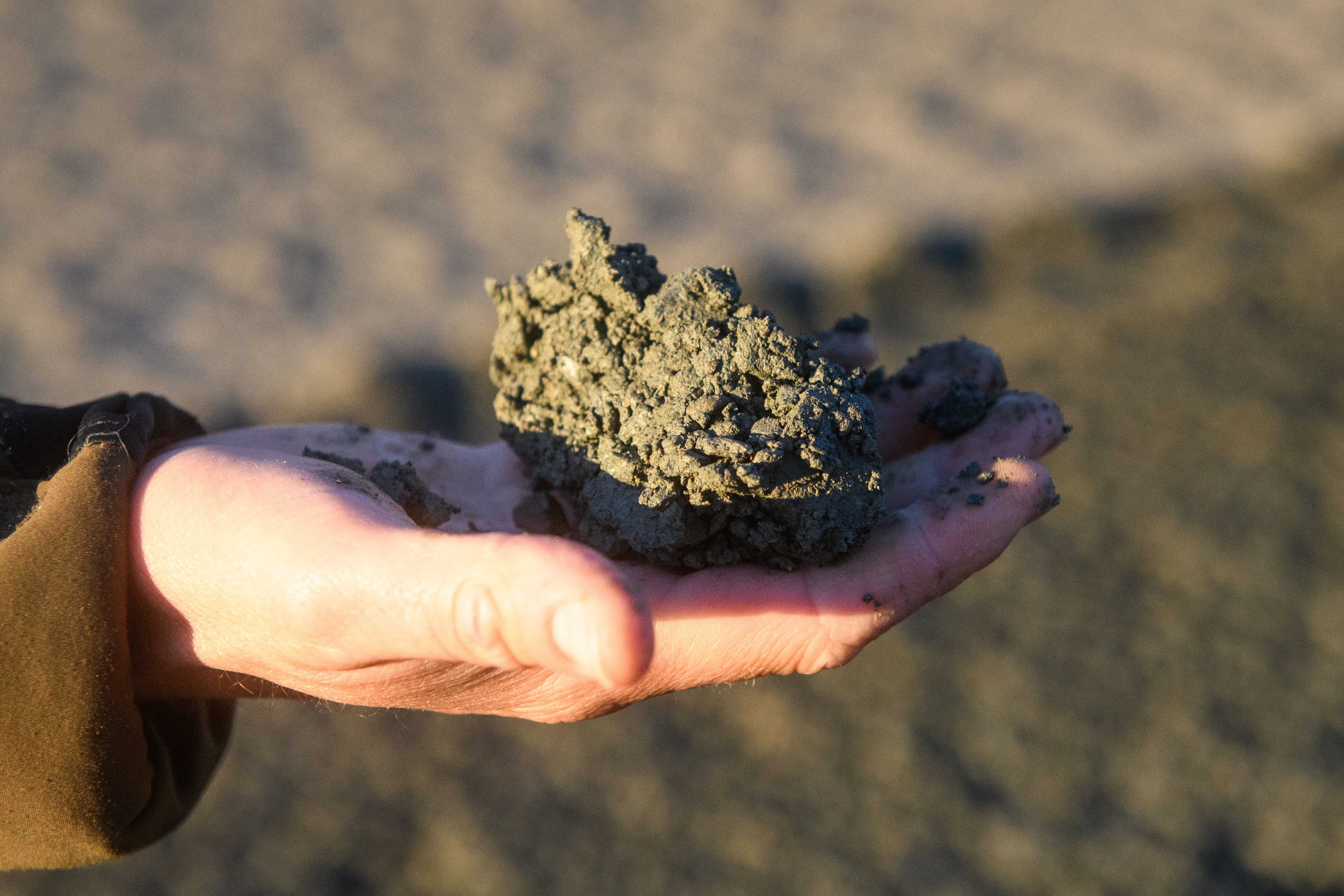
Mixing cement with the aggregate is called ‘binding’ & it improves the moisture resilience of the pavement.
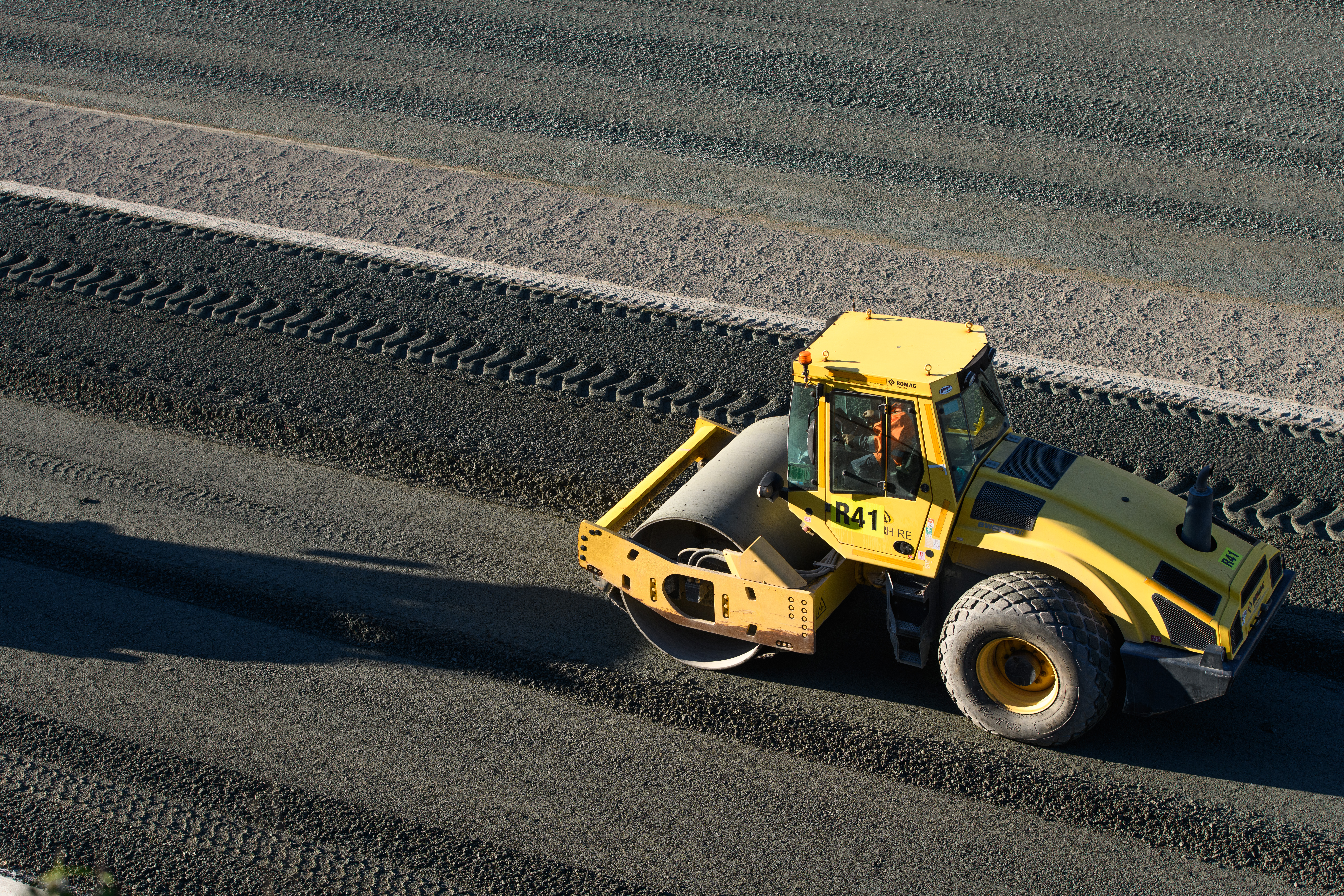
Rollers compact each pavement layer, subbase and basecourse, before chip sealing begins.
But while you’ll be familiar with chipseal roads – we thought you might like to check out exactly how we’re laying it (and all the stabilisation that comes first).
Even though our chipseal is being bedded in using rollers and other machinery, when Transmission Gully opens there will be loose chip around.
And while we’ll be minimising the risks of loose chip with regular sweeping, there are some key things to remember when driving over fresh chip seal:
Too fast and you risk ripping up the chips and sending them flying, which may damage other vehicles. Too slow and you risk the road surface (the bitumen holding the chips down) sticking to your wheels.
What’s safe depends on the road surface, the weather, your speed and the type of vehicle you’re driving.
In good conditions, you should always drive at least two seconds behind the vehicle in front of you.
In other conditions (such as on new chip that hasn’t had a lot of traffic over it yet) you’re safer to allow four seconds behind the vehicle in front of you.
To determine your following distance - watch the vehicle in front as it passes a landmark, such as a bridge, streetlight or sign. As it passes the landmark, count two (or four) seconds. If you pass the landmark before you finish counting, you’re following too closely.
A reminder that there are road works underway and a lane closure in place at the northern end of Transmission Gully near the Mackays Crossing interchange. The work to install streetlights will take around three months, with the team progressively moving from one work site to the next.
To enable the team to work safely along the shoulder of SH1, we have temporarily closed one of the northbound lanes, which means an extension to the single lane northbound. The signposted speed limit drops to 50 km/h through site off peak (and 80 km/h during the peak periods).
Later this month the work will move to the southbound shoulder of SH1. For motorists this means the current southbound merge from two lanes to one lane on SH1 near Mackays Crossing will move north by around 325 metres.
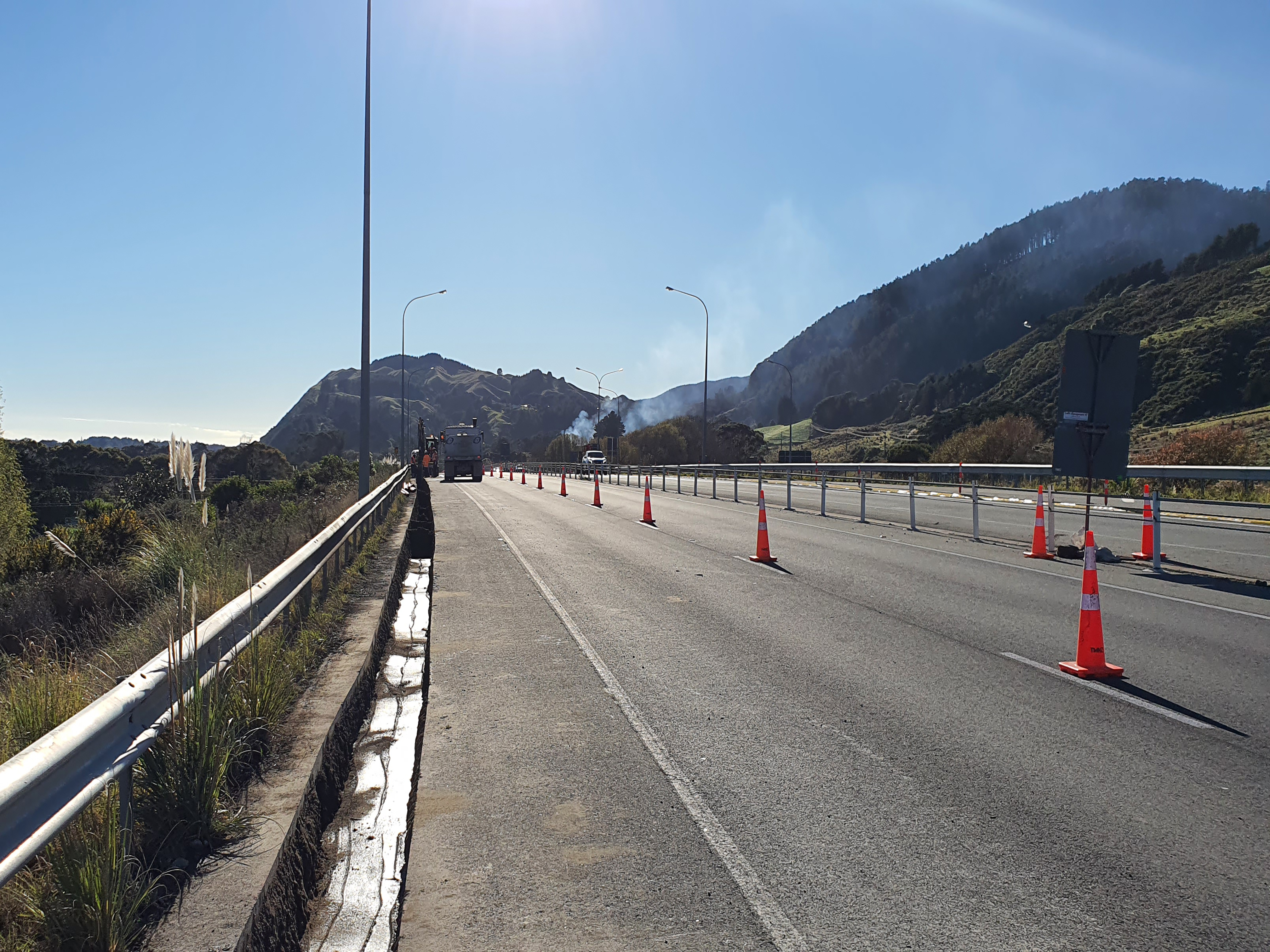
Trenching to install cabling to the new streetlights at the Mackays Crossing Interchange.
Bluff Road is currently closed for approximately six weeks at the intersection with Kenepuru Drive, and there will be no right turns in and out during the remaining stages of the works. No access is available by Lower Main Drive. Access to Somerset and Carrus is via Raiha Street and then Hospital Drive.
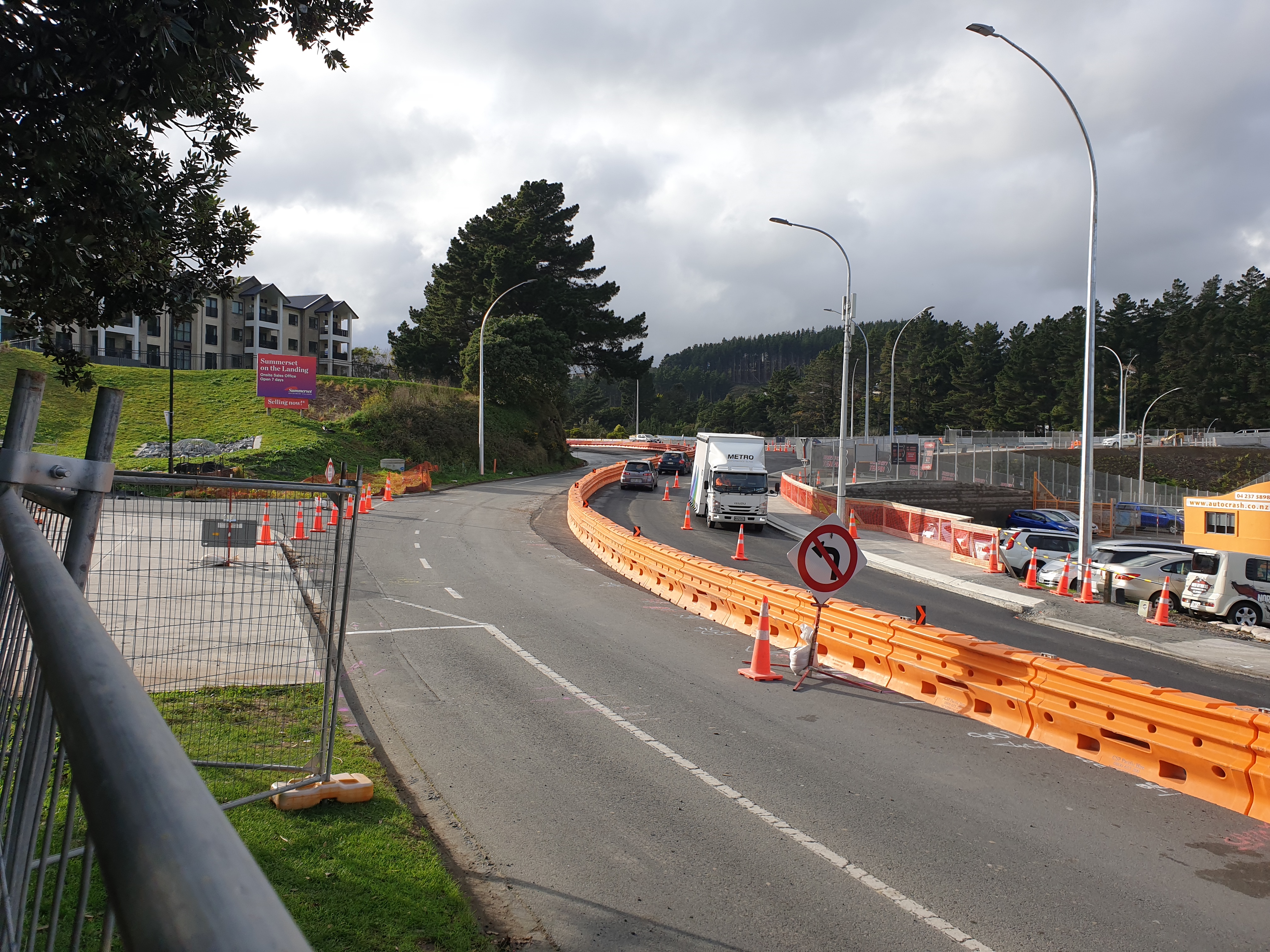
The temporary layout on Kenepuru Drive with Bluff Road closed.
This is required to enable the construction of a new two-lane roundabout, part of the Transmission Gully project’s Kenepuru Interchange.
We are maintaining two lanes of traffic flow through the worksite on Kenepuru Drive during peak times. Please be aware that traffic is under ‘stop/go’ traffic management at times during the night.
Pedestrian access is available on the eastern side of Kenepuru Drive on a temporary footpath.
Once Transmission Gully opens, Kenepuru Link Road will take traffic to and from the new motorway and connect with Kenepuru Drive at the new roundabout, located near North City 10-Pin.
Work on the interchange is scheduled for completion in September.
More about what the stages of work mean for road users(external link)
We continue to remind all members of the public to stay safe and not enter the project site at any time. Work is underway in multiple areas and it remains a high hazard area.
If you have any questions, please contact us at info@tg.co.nz. If you have an urgent matter, please call the 24-hour project hotline on 0800 TGINFO. If we are working outside of our normal work hours and you’re one of our neighbours, we’ll be in touch with you directly as usual.
In our next newsletter, we will take a closer look at driving Transmission Gully, which will continue to be a feature of our remaining newsletters in the lead up to road opening.
But for now, Haere ra from the Transmission Gully team.
Don’t forget to tell your friends and family to sign up to receive the latest project news.
Subscribe to email updates(external link)
We hope you enjoy reading these updates, and we’d love to hear from you. If you have any questions, comments or story suggestions, you can email them to info@tg.co.nz
For the latest traffic updates follow us on Twitter and Facebook:
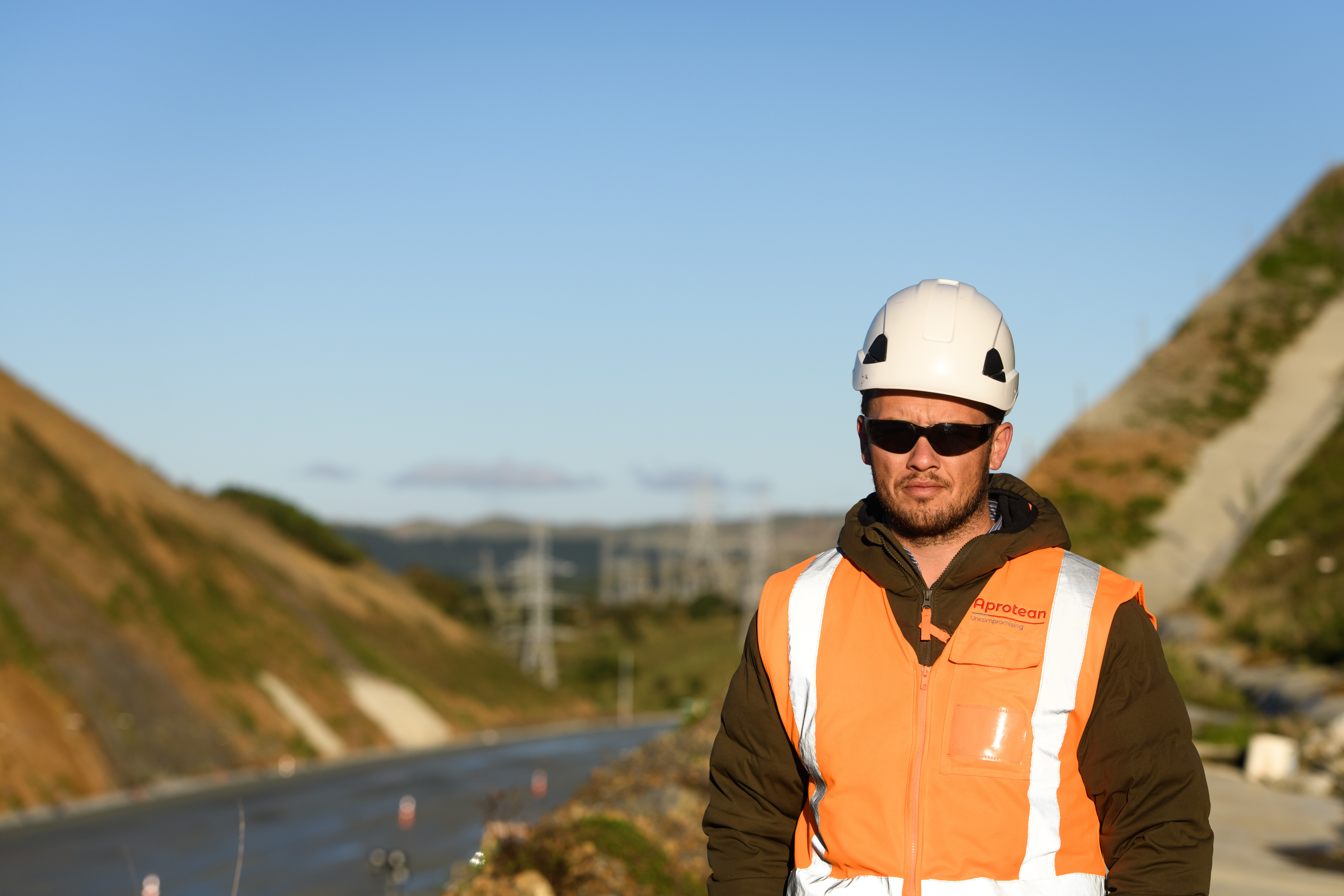
Hamish Tarr, Project Engineer.